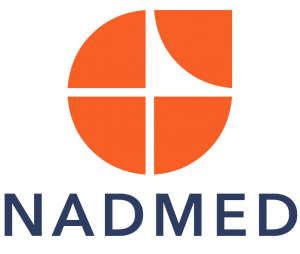What are NADs?
NADs (nicotinamide adenine dinucleotides) are coenzymes which are essential to metabolism. NADs are found in every living cell. There are four different types of NAD: NAD+, NADH, NADP+ and NADPH.
See more Unlock the secrets of NADs
How to purchase NADMED kits and services?
Fill in the contact form and we’ll get in touch with you. We do not provide the kit or our services to individuals.
However, if NAD testing of indivdual samples is what you are looking for turn to your local clinic or laboratory. Hopefully they have NADMED method in use.
What equipment is needed to run NADMED assay?
This is a list of necessary items and equipment you need to perform a NADMED assay:
What is the difference between NADMED and other NAD measuring kits?
The current NAD measuring kits are not accurate enough to provide results that can guide e.g. NAD boosters dosage in proper order. See more “Groundbreaking technology”.
How to prepare samples?
Whole blood (human)
– Blood should be collected into the smallest EDTA vacutainer (2 ml)
-IMPORTANT! If possible, the blood sample should be divided into 150 – 200 μL aliquots in separate test tubes, e.g. Eppendorf tube
-Samples should be frozen at -20 °C within 4-6h after withdrawal for several days. Samples should be stored for longer time in -80 °C
IMPORTANT! Keep consistent time between withdrawal and freezing for all samples
Whole blood (animal)
-Blood should be collected into the EDTA tubes and divided into 150 – 200 μL aliquots in separate test tubes, e.g. Eppendorf tube
-Samples should be frozen at -20°C as soon as possible after withdrawal for several days.
-Samples should be stored for longer time in -80°C
IMPORTANT! Keep consistent time between withdrawal and freezing for all samples
Read more
How to store the kit upon arrival?
In -20°C freezer with consistent temperature.
How many samples can be measured with one kit?
40 samples measured in duplicates, each metabolite (e.g. NAD+ and NADH) are measured on separate 96 well plates.
What samples can be used for the NAD measurements?
NADMED method can utilize whole blood, tissues and cultured cell (human or animal). Most NADs are found in cells – plasma and serum contain very low levels of NADs and are not suitable for NADMED technology.
For more details, please contact us
What is the optimal sample size?
We recommend using 150 – 200μL/sample of whole blood, approx 20 mg/sample of tissue, and 0.5 – 1M/sample of cultured cells. For more details, please contact us.
Where to find instructions for use?
Instruction can be found on our website in section “documents”.
Can the kit be used several times?
No, the kit is for one time use. We do not recommend freezing / thawing the kit components.
How do you report the NAD levels?
- Blood: NAD levels are normalized per volume (final concentration is in μM)
- Tissues/cells: NAD levels are normalized per sample weight or protein amount
